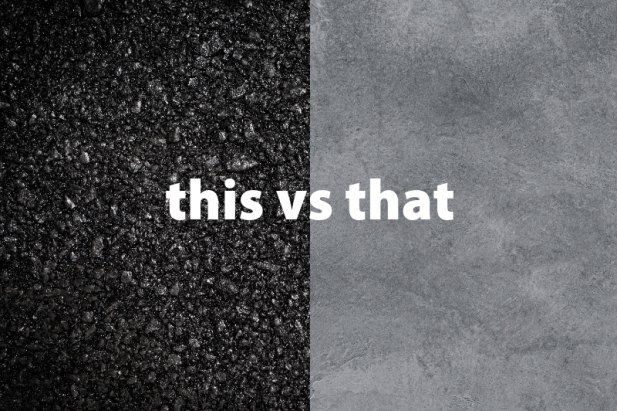
This vs. that: concrete vs. asphalt paving
Concrete and asphalt are the two most common choices for parking lots, access drives and other, similar surfacing needs. But how do the two measure up? And which is better for your paving project?
Paving pros and cons of concrete and asphalt
Let’s compare and contrast these two popular choices to see which might work best for your project.
Concrete paving pros and cons
- Concrete tends to last longer than asphalt, up to 30 years.
- Concrete is essentially maintenance-free, if placed properly.
- Concrete is typically costlier than asphalt, costing up to 35 percent more, but in some areas can be comparable to asphalt depending on the proximity of an asphalt plant to the project site.
- Concrete typically requires a thinner layer of aggregate base subgrade than asphalt, which can be a benefit to grading and subgrade base costs.
- Concrete costs $4-$8 per square foot and customized concrete paving can cost $10 to $20 per square foot.
- Concrete should be allowed seven days to cure before allowing traffic, but typically requires 28 days to cure to full strength.
- Concrete sealing is not necessary, but when done every five years it may prolong the surface’s life.
- Concrete is considered to be environmentally friendly because it can be recycled as subgrade base.
- Concrete is vulnerable to the expansion and contraction of moisture, so in climates prone to the freeze/thaw cycle, concrete can deteriorate over time if the subgrade is not prepped properly. It may also crack when experiencing pressure or surface movement.
- Concrete surfaces will deteriorate when exposed to salt and de-icing products. In climates where salt and de-icing products are used to melt ice on paving surfaces, concrete will deteriorate over time with exposure.
- Patching concrete may be more obvious than repairing asphalt. Repairs may be more expensive.
- Concrete tends to be a better choice in warmer climates.
Asphalt paving pros and cons
- With proper care and maintenance, asphalt pavement can last more than 20 years.
- Asphalt paving costs $2-$5 per square foot, depending on the thickness and additives specified.
- Asphalt can be installed more quickly than concrete and cures more quickly than concrete, available for use almost immediately.
- Asphalt typically requires a thicker layer of aggregate base subgrade than concrete, which can increase grading and subgrade base costs.
- Asphalt requires more maintenance but is easier and less expensive to repair. It should be resealed six months after installation and then every three-to-five years.
- Asphalt repair can require only the top later be repaved; the base and middle layers of asphalt are considered to be permanent. This can make asphalt more cost effective than concrete.
- Asphalt is considered to be environmentally friendly because it can be recycled.
- Asphalt expands and contracts with temperature changes.
- Asphalt will not deteriorate when salt and de-icing products are used to melt snow and ice.
- Asphalt absorbs heat from the sun to a higher degree than concrete, causing snow and ice to melt more quickly.
- In warmer climates, asphalt pavement can become very hot and soften, at times even becoming oily.
Selecting the surface that’s right for you
As you can see asphalt and concrete paving each offer benefits and drawbacks. Much of your decision may hinge on the climate in which the surface is installed; concrete and asphalt differ widely in how durable they are in specific climates. But it’s important to also consider repair, maintenance and life span. With these factors to consider, you can make the right choice between concrete and asphalt paving for your construction project.